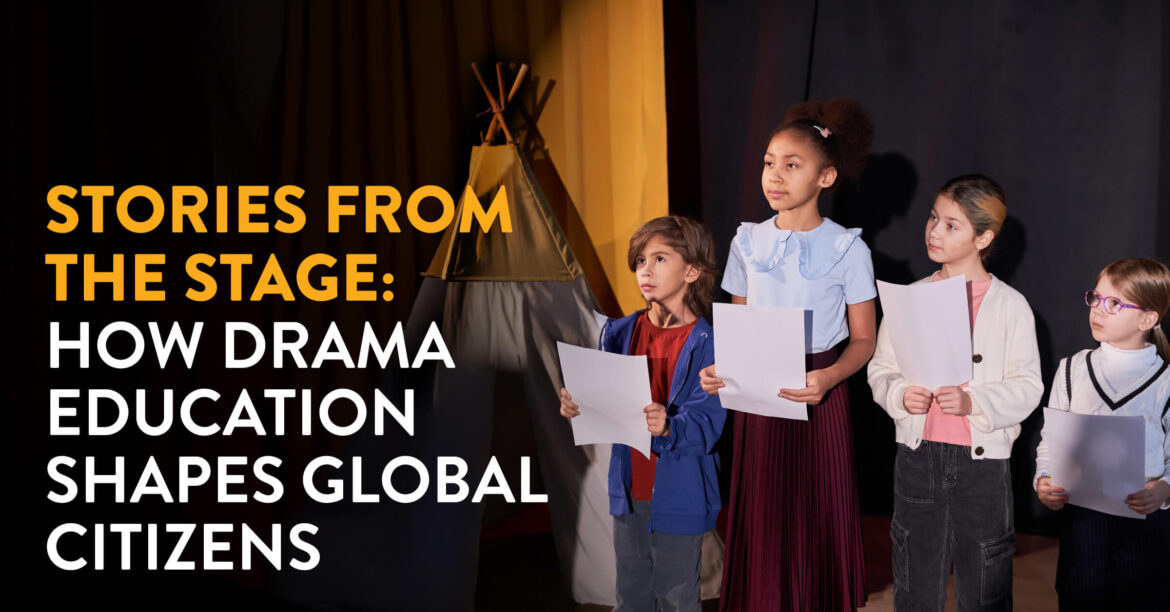By Lauren Backhouse
The term “global citizen” will likely be familiar to many of us working within the education sector. Over the past decade, a focus on Global Citizenship Education (GCE) has gradually established itself within curriculum development plans, professional development sessions, and more. At its core, GCE focuses on teaching students to think beyond the country or community to which they belong. Instead, it encourages them to consider what they can do to address global issues and help ensure that the world is a fair, just, and equitable place.
The need for global citizens who are able to empathise, collaborate, and think critically has become increasingly urgent in today’s progressively interconnected—yet increasingly divided—society. But it can be a challenge to present students with opportunities to truly see the lived realities experienced by others.
While schools have often looked to personal, social, health, and economic (PSHE) programs, social studies, or languages to foster the qualities of a global citizen, there exists a powerful tool that can sometimes be overlooked, but is easily incorporated into many lessons: drama. Imagine a classroom where students can be transported all over the world—from stepping into the shoes of a refugee, to revisiting a moment in our past so as to uncover new meaning.
Drama (and storytelling) has the ability to allow students from diverse backgrounds to explore different values and attitudes, and, importantly, offer them a voice through which they can express themselves. In moments like these, drama becomes far more than a performance-based art; instead, it is a dynamic educational tool that improves students’ capacity to understand perspectives far removed from their own.
Drama in Practice
I have been working in a Year 4 classroom for the past four years. In the spring term we follow an inquiry into the concept of migration. The first year I taught this unit, I started by looking at passports and visas, then introduced students to different reasons for migration—both human (such as wars) and physical (such as floods or famines). We also went through some classic activities, like what would you pack in your bag if you could only take five items, and so on.
At the end of the unit, my students could tell you many things about why people migrated, but something was missing. Although they could relay facts, they had not learned to empathise with any of the situations we had discussed in class. To them, these scenarios seemed like stories rather than real life.
The next year, after taking part in a workshop with the Royal Shakespeare Company and watching some secondary drama lessons, I began to understand the impact that drama can have on empathy when effectively incorporated in planning. When it was time to teach the migration unit again, I decided to focus it on drama practices.
I planned to do this by centring the unit around The Island, a powerful picture book by Armin Greder. Within the book, haunting images are used to convey the story of a man who mysteriously arrives on an island and is starkly different to those around him. Initially accepted into the island’s village, soon fear and suspicion begin to spread amongst the villagers, and the man is sent back out to sea to meet an uncertain fate.
We started our unit by role-playing the man. Looking at a picture of his rickety, wooden raft and listening to sounds of the sea, students considered his emotions. What might have forced him on such a dangerous journey? What did he hope to find in a new land? They created a backstory for the man, using freeze frames to show different points in his life before he was forced to flee his home. Through the visual power of drama, we saw still images of his children’s birthdays, his father’s funeral, his graduation.
Building on this starting point, students then explored the complex reasons that force many people to become displaced. Equipped with this new knowledge, we returned to the story of the man, considering what may have forced him to leave his home in search of safety. Students worked in groups to freeze frame their different ideas for his displacement, making connections across their learning. We also touched upon what feelings the man might have had at this point, with students saying a word or sentence in role when “awoken” from their frozen state.
Next, I had students contemplate how the man may have travelled to the island in search of safety. The class explored stories of real refugees, from arduous journeys on foot, to perilous boat crossings. We took one of the activities that I had used the previous year—packing a bag with five items—and elevated it through drama. This time, students role-played a scenario of packing their bag and boarding a boat to an unknown destination, considering the emotions that would be felt during this task.
For the role-play, students were to choose three different actions and end with a word. To the sound of soft music, they showed their actions as a whole class and words such as mournful, sad, and heart-broken filled the classroom. One group finished their performance with the characters lightly touching hands and staring at the packed suitcase, wondering what the future held.
We then simulated a visa inspection where, upon arrival in their new country, students were divided into groups based on the passports they held. This sparked meaningful conversations as students researched their own passports, confronting the realities of global mobility. For instance, while some discovered the privilege of visa-free travel, others came to understand the challenges faced by those who require visas for even a simple holiday.
Over the course of our inquiry, we also considered the role of the islanders who had so callously cast the man back out to sea. Why had they reacted in such a way instead of offering to help? Students hot seated the different islanders and, when questioned, one overarching theme was present in the characters during the exercise: fear. Fear of the unknown, fear of those who are different, fear of change.
The students began to unpack these fears, discussing how they might stem from misinformation, prejudice, or a lack of resources. Through this process, they explored how fear can drive individuals and communities to make decisions that prioritize self-preservation over compassion. This discussion opened up a deeper reflection on the moral dilemmas faced by both individuals and societies when confronted with crises, drawing parallels to current global responses to refugees and migrants.
As the unit came to a close, this time my students had a depth of knowledge that the previous cohort did not. Armed with information, empathy, and different perspectives, these students were able to think critically about the complexities of migration. They could articulate the challenges faced by refugees, the fears and biases of host communities, and the systemic inequalities that shape these experiences.
Importantly, they could also see that they had a role to play in addressing these issues. They understood that we all need to work together to become part of the solution.
Challenges and Misconceptions
Drama is likely to hold different meanings for different teachers. For some, it can be viewed as a one-off performance at Christmas or the end of the year. For others, it can provoke a sense of dread. I used to fall into the latter category. As a person who fears being on stage, the thought of incorporating drama into my classroom practice and pretending to be someone else filled me with embarrassment. And so, for a long time, I avoided it.
It wasn’t until recently, under the mentorship of an exceptional Head of Drama at my school, Matthew Readman, that I began to view drama in a different light. Working with Matthew made me appreciate that it doesn’t have to be all bells and whistles. While you can hop into a role if necessary, often the true purpose of drama lies in guiding students through a journey, helping them to identify with people or characters so that they can build their own understanding of a world. In that sense, the ultimate goal is to create emotion (especially empathy), and have students feel it in real time.
It can, however, be challenging to incorporate drama into the curriculum. Certainly in the schools I have worked at, time is always an issue. There is so much that needs to be covered and timetables are already bursting at the seams.
Space can also be a challenge. I was lucky enough to have a classroom that allowed me to move desks and create an open area for role playing, but this is not always the case. When you have less room to work with, activities such as hot seating work well, because all that’s needed are places for students to sit.
But in my opinion, the biggest obstacle to integrating drama techniques into the classroom is a lack of guidance. Educators need proper, thorough training in order to feel confident that they can effectively utilize the power of drama in their lessons. Without proper support, it is easy to sideline drama, despite its limitless potential for engaging students.
The Stage as a Global Classroom
Drama holds a powerful place within education, offering students an opportunity to engage with global issues in ways that few other subjects can. By fostering empathy, critical thinking, and cultural awareness, drama plays a vital role in shaping the next generation of global citizens.
I have seen first-hand the impact it has had on my students. It allowed them to stop seeing the lives of others as something far removed from their own. They cared, they understood, and they wanted to do something to help. This is the true power of drama.



